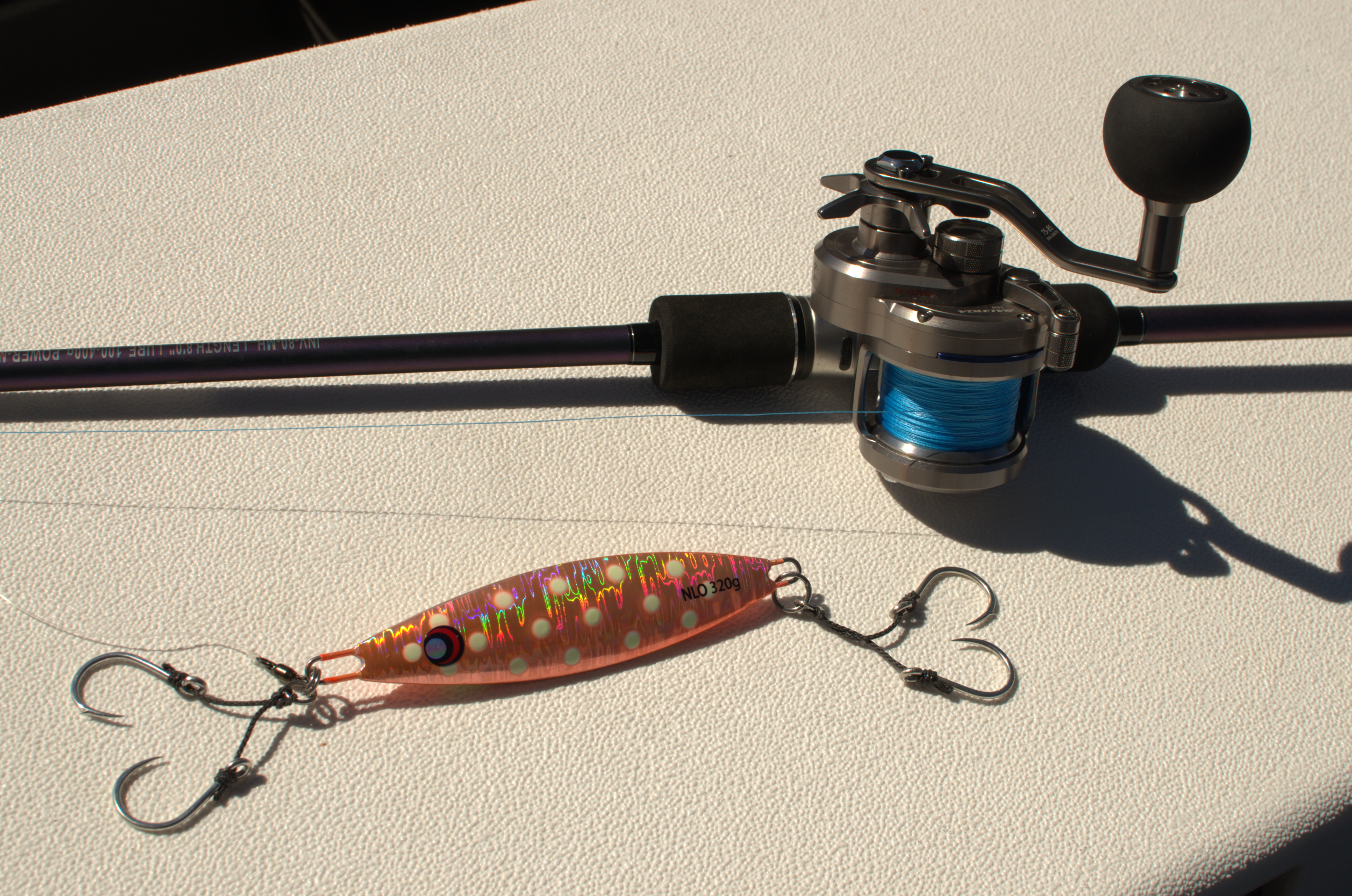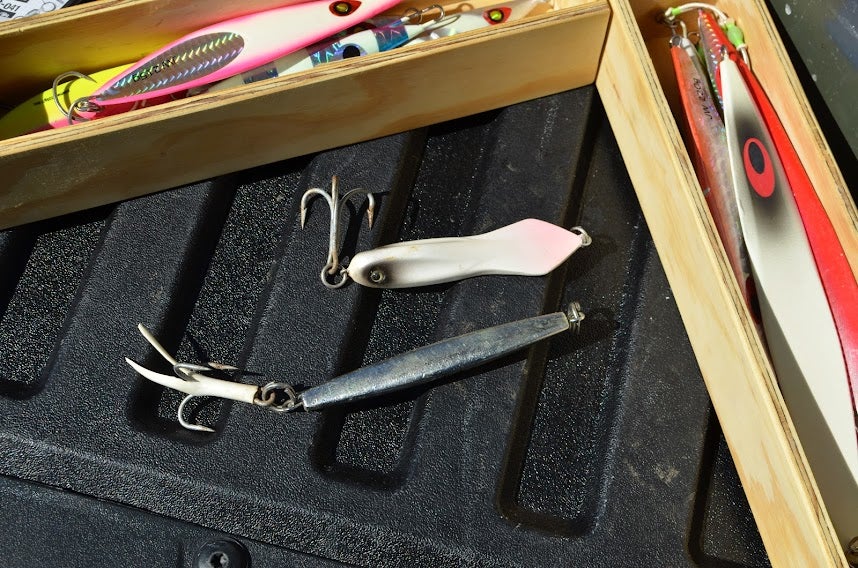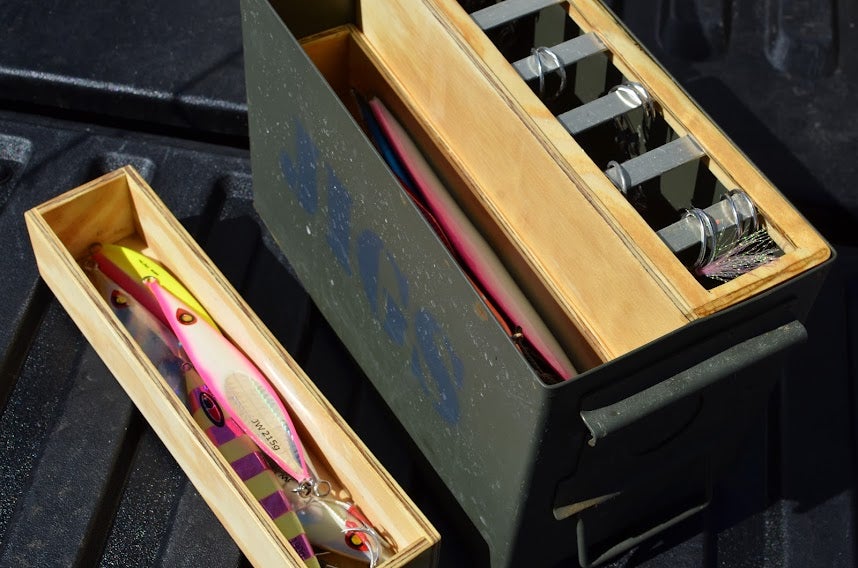Fishing Basics – Introduction to Slow Pitch Jigging Gear
Eugene L. 05.03.22

The biggest rage nowadays for offshore bottom fishing has to be Slow Pitch Jigging. Many consider it the magic bullet for bottom fishing; although, I wouldn’t go so far as to claim that. I have had good luck with it, catching plenty of grouper, snapper, and the occasional pelagic fish on slow pitch jigs. Before this, the new hot thing was high-speed vertical jigging or speed-jigging for short. In speed-jigging, you’re trying to work a heavy jig as fast and erratically as possible through the water column. Triggering fish to strike what they think is a fleeing baitfish.
Slow pitch jigging goes the other way with working the jig, where the majority of the action is from the fall of the jig. You are not working the jig as fast as possible but going at a much more leisurely pace. Loading up the specialized rod so it whips the jig out to the side and lets it fall, shaking and darting the whole way down.
This action imitates a wounded or dying baitfish. Both methods of jigging can get strikes from actively feeding fish. But Slow Pitch jigging can trigger strikes from a more inactive fish that are not really wanting to chase down a fleeing baitfish. In Japan where this technique is originally from, there is a great deal of fishing pressure. So they needed a new technique to trigger more pressured and hook shy fish to attack a lure.
I won’t be covering everything about slow pitch jigging in this article though. The majority of this is just covering the gear and a little bit about how to implement them on the water. Slow pitch fishing gear is a bit more specialized than other techniques, needing particular equipment for it to be successful. In particular, the rods and jigs are very different from other offshore gear.

Slow Pitch Jigs
The standard for slow pitch jigs is the leaf-shaped flatter jigs. One side is flatter with the other having a keel, this gives it the flutter as falls. They can be symmetrical in shape or wider on the head or tail end of the jig. Some have scoops or ridges on them. All of these variances impart action onto the jig. Changing the way the jig falls and flutters. It also affects how they swing out to the side when worked by the rod. These jigs tend to be a bit smaller, usually maxing out around 300 – 350 grams. I personally use the 270 gram jigs the most in the Gulf of Mexico but if you can get away with a lighter jig I recommend it.
The biggest downside of these jigs is how they are affected by current. To be the most effective as possible while jigging you want to be directly above your jig. But current makes that difficult, you can cast up current to negate the effects somewhat. These wider jigs get caught in faster currents easily and can end up far away from you. So a different type of slow pitch jig is available for those conditions.

Deep Slow Pitch Jigs
The solution for rough conditions and deep waters. Deep slow pitch jigs are purpose-made to cut through the current and sink as fast as possible. Long and skinny they have much less water resistance on the fall and when being worked. They still have one side flatter and one side with a keel, but they produce a much less pronounced side-to-side action and less flutter. Instead, they have more of a shimmering action when they fall. So while they move less, they are easier to stay in contact with in heavy current and very deep waters.
These jigs can reach up to 600 grams easily, but can be found as small as 100 grams. The largest of the jigs are usually used for targeting fish at very deep depths, such as tilefish at 1,400 ft. Not exactly the most fun way to fish but can be very productive in conditions that would be unfishable with standard jigs.

Traditional Jigs
While not conventional, you can use traditional diamond jigs on a slow pitch rod. They aren’t going to act any different than normal because of the rod but they still work. These jigs have stood the test of time for this long for a reason. And sometimes a diamond jig is the only thing a scamp will want.

Gear and Accessories
There are a few accessories you need for slow pitch jigging. You will need a jig box or jig bag, there are many commercial offerings out there. Or you can DIY a solution like this .50 Cal Ammo Can converted into a jig box. The right side of the box gives quick access to pre-rigged jigs. You will need a good set of split ring pliers, you need them for attaching hooks to the jigs with split rings. Or for attaching the jigs to your leader.
For a leader, you will be needing anywhere from 40 Lb – 60 Lb fluorocarbon leader. You should have about 6 – 8 ft of leader, I go a little longer so if I get cut off or have to re-rig I have plenty of leader material left. At the end of the leader have a high-quality ball bearing swivel tied on with a San Diego jam knot. I recommend having a split ring attached to that swivel so you can swap jigs and assist hooks easily.



For the mainline, you will need a high-quality braid, something between 20 – 40 Lb test. Line scope is the enemy, so the thinner the better. Braided line will break a good percentage above the stated line rating for most manufacturers, so even if your running a 20 Lb line it’ll usually break at 30 Lb of force.

Rod and Reel
The rod and reel for slow pitch jigging is one of the best parts of the technique. You will be using incredibly light gear for the size of fish you might pull up. A rod and reel combo weighs so much less than a conventional bottom rig, great for spending a full day on the rail.
For the reel you want something capable for holding at least 400meters of 40 Lb braid and capable of at least 45″ line retrieved per crank. You need that fast line retrieve rate for properly working the jig. I personally use a Saltiga 15 Star Drag with 520 meters of 30 Lb braid. I would recommend a two speed reel if your budget allows it though. That low gear setting is very useful for cranking up larger fish.
The rod for slow pitch fishing is the key item besides the jigs themselves in slow pitch jigging. They are very unique being a very parabolic rod capable of bending all the way to the rod but. You need this ultra slow action rod so that when you lift up, the rod loads up with the weight of the jig. Then at the end of the lift the rod will release and flick your jig out imparting that erratic action before it starts falling.
These rods are designed around working the lure more than fighting the fish, so most of the work is done by the reel and it’s drag system. When fighting larger fish you try to keep the rod lower towards the water and just crank when you can.
Close
For me this is a very rewarding technique, the gear is light weight and you stay a lot cleaner fishing than using live or cut bait. But the entry cost is steep, I have over $500 invested into just the rod and reel, which is considered a middle of the road quality gear. That total isn’t even considering the cost of all the jigs, hooks, and terminal tackle involved. While there are more wallet friendly tackle options, expect to spend at least $300 for a full combo with a few jigs. If you can handle the cost of a rig I really recommend trying this out, or ask around I do know some charters are starting to have a slow pitch combo on board. So maybe try one out and see if its for you.